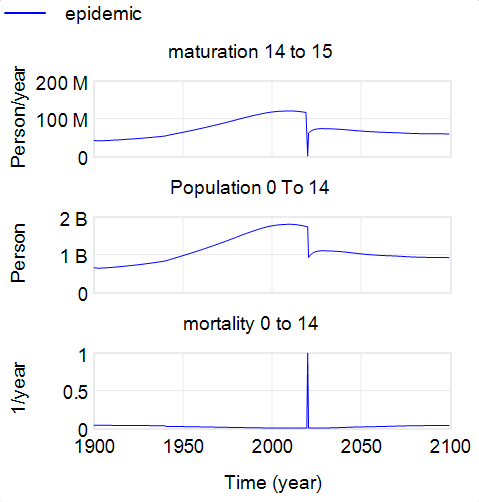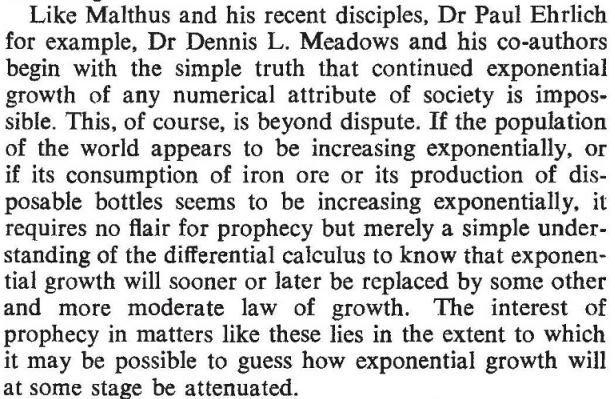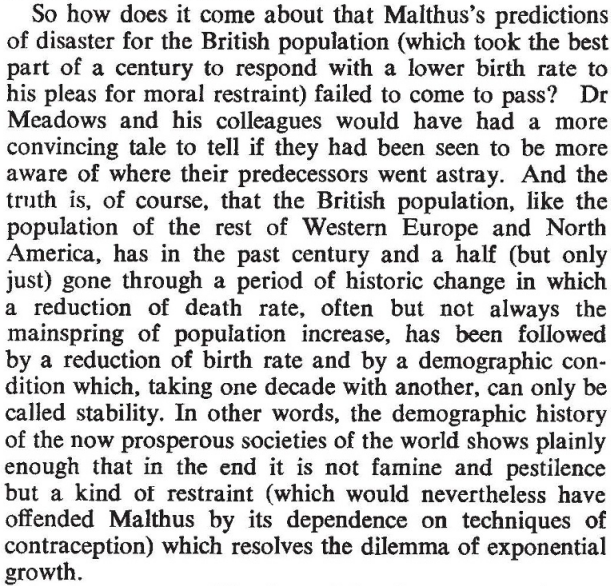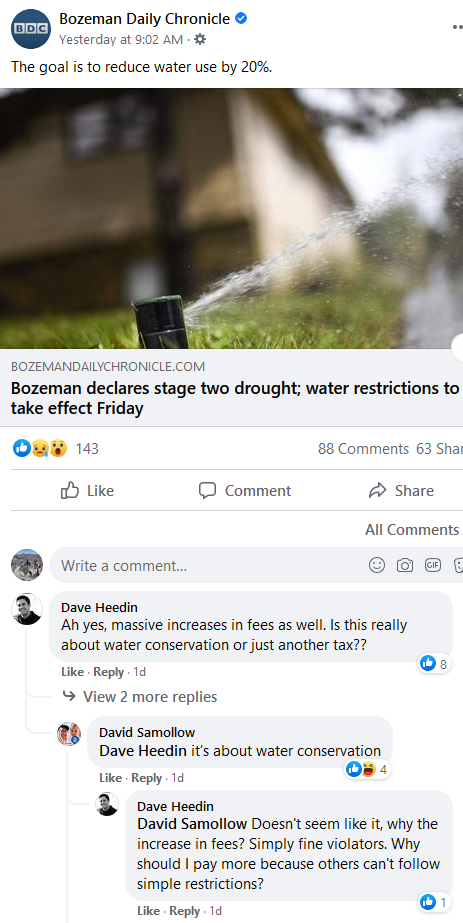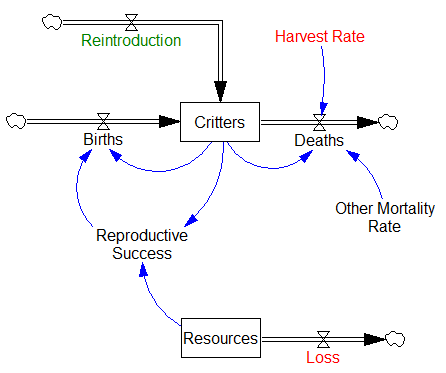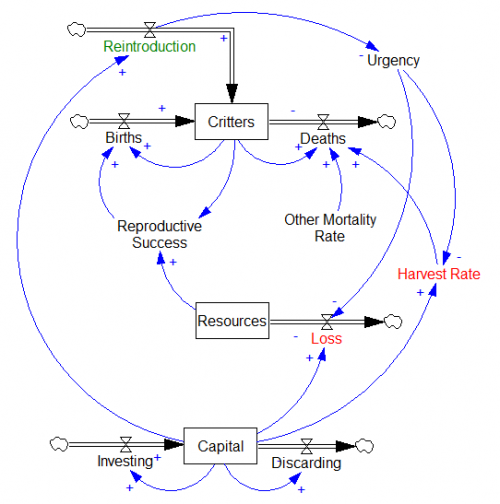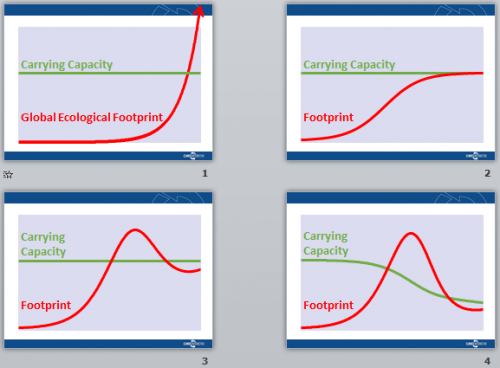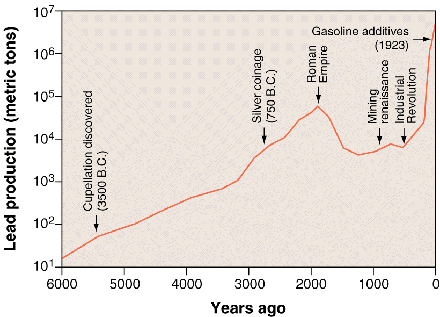I was flipping through the SD Discussion List archive and ran across this gem from George Richardson, responding to Bernadette O’Regan’s query about critiques of SD:
The significant or well-known criticisms of system dynamics include:
William Nordhaus, Measurement without Data (The Economic Journal, 83,332;
Dec. 1973)
[Nordhaus objects to the fact that Forrester seriously proposes a
world model fit to essentially only two data points. He simplifies the
model to help him analyze it, carries through some investigations that
cause him to doubt the model, and makes the mistake of critiquing a
univariate relation (effect of material standard of living on births)
using multivariate real world data — the real-world data has all the
other influences in the system at work, while Nordhaus wants to pull out
just the effect of standard of living). Sadly, a very influential
critique in the economics literature.]See Forrester’s response in Jay. W. Forrester, Gilbert W. Low, and
Nathaniel J. Mass, The Debate on World Dynamics: a Response to Nordhaus
(Policy Sciences 5 (1974).Joseph Weizenbaum, Computer Power and Human Reason (W.H. Freeman, 1976).
[Weizenbaum, a professor of computer science at MIT, was the author of
the speech processing and recognition program ELIZA. He became very
distressed at what people were proposing we could do with computers (e.g.,
use ELIZA seriously to counsel emotionally disturbed people), and wrote
this impassioned book about what in his view computers can do well and
what they cant. Contains sections on system dynamics in various places
and finds Forrester’s claims for the approach to be too broad and, like
Herbert Simon’s, “very simple.”]Robert Boyd, World Dynamics: A Note (Science, 177, August 11, 1972).
[Boyd’s very original and interesting critique of World Dynamics tries
to use Forrester’s model itself to argue that World Dynamics did not solve
the essential question about limits to growth — whether technology can
avert the limits explicitly assumed in World Dynamics and the Limits to
Growth models. Boyd adds a Technology level to World Dynamics and
incorporates four effects on things like pollution generated per capita,
and finds that one can incorporate assumptions in the model that make the
problem go away. Unfortunately for his argument, Boyd’s additions are
extremely sensitive to particular parameter values and he unrealistically
assumes things like the second law of thermodynamics doesn’t apply. We
used to give this as an exercise: step 1 — build Boyd’s additions into
Forrester’s model and investigate; step 2 — incorporate Boyd’s
assumptions in Forrester’s original model just by changing parameters;
step 3 — reflect on what you’ve learned. Still a great exercise.]Robert M. Solow, Notes on Doomsday Models (Proceedings of the National
Academy of Science 69,12, pp. 3832-3833, dec. 1972).
[Solow, an Institute Professor at MIT, critiqued the World Dynamics and
Limits to Growth models on structure (saying their conclusions were built
in), absence of a price system, and poor-to-nonexistent empirical
foundation. The differences between an econometric approach and a system
dynamics approach are quite vivid in this critique.]H. Igor Ansoff and Dennis Slevin, An Appreciation of Industrial Dynamics.
(Management Science, 14,7, March 1968).
[Unfortunately, I no longer have a copy of this critique, so I cant
summarize it, but its worth finding in a library. See also Forrester’s
“A Response to Ansoff and Slevin” which also appeared in Management
Science (vol. 14, 9m May 1968), and is reprinted in Forrester’s Collected
Papers, available from Productivity Press.]These are all rather ancient, “classical” critiques. I am not really
familiar with current critiques, either because they exist but have not
come to my attention or because they are few and far between. If the
latter, that could be because we are doing less controversial work these
days or because the critics think we’re not really a threat anymore.I hope we’re still a threat.
…GPR
George P. Richardson
Rockefeller College of Public Affairs and Policy, SUNY, Albany
I’ll add a few more when I get a chance. These critiques really concern World Dynamics and the Limits to Growth rather than SD per se, but many have thrown the baby out with the bathwater. Some of these critiques have not aged well. But some are also still true. For example, Solow’s critique of World Dynamics starts with the absence of a price system, and Boyd’s critique center’s on the absence of technology. There are lots of SD models with prices and technology in them, but there isn’t really a successor to World Dynamics or World3 that does a good job of addressing these critiques. At the same time, I think it’s now obvious that neither prices nor technology has brought stability to the environment and resources.

